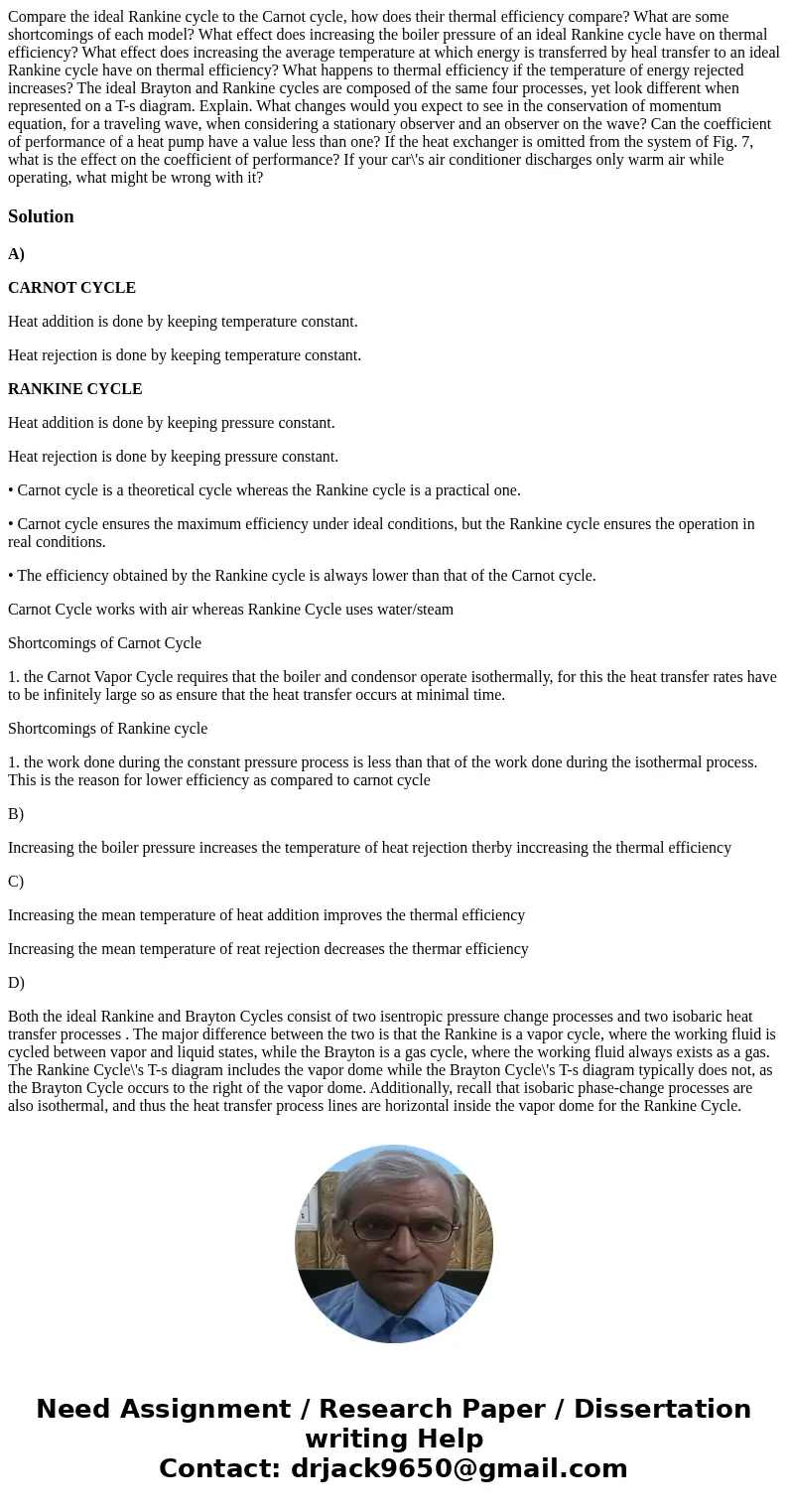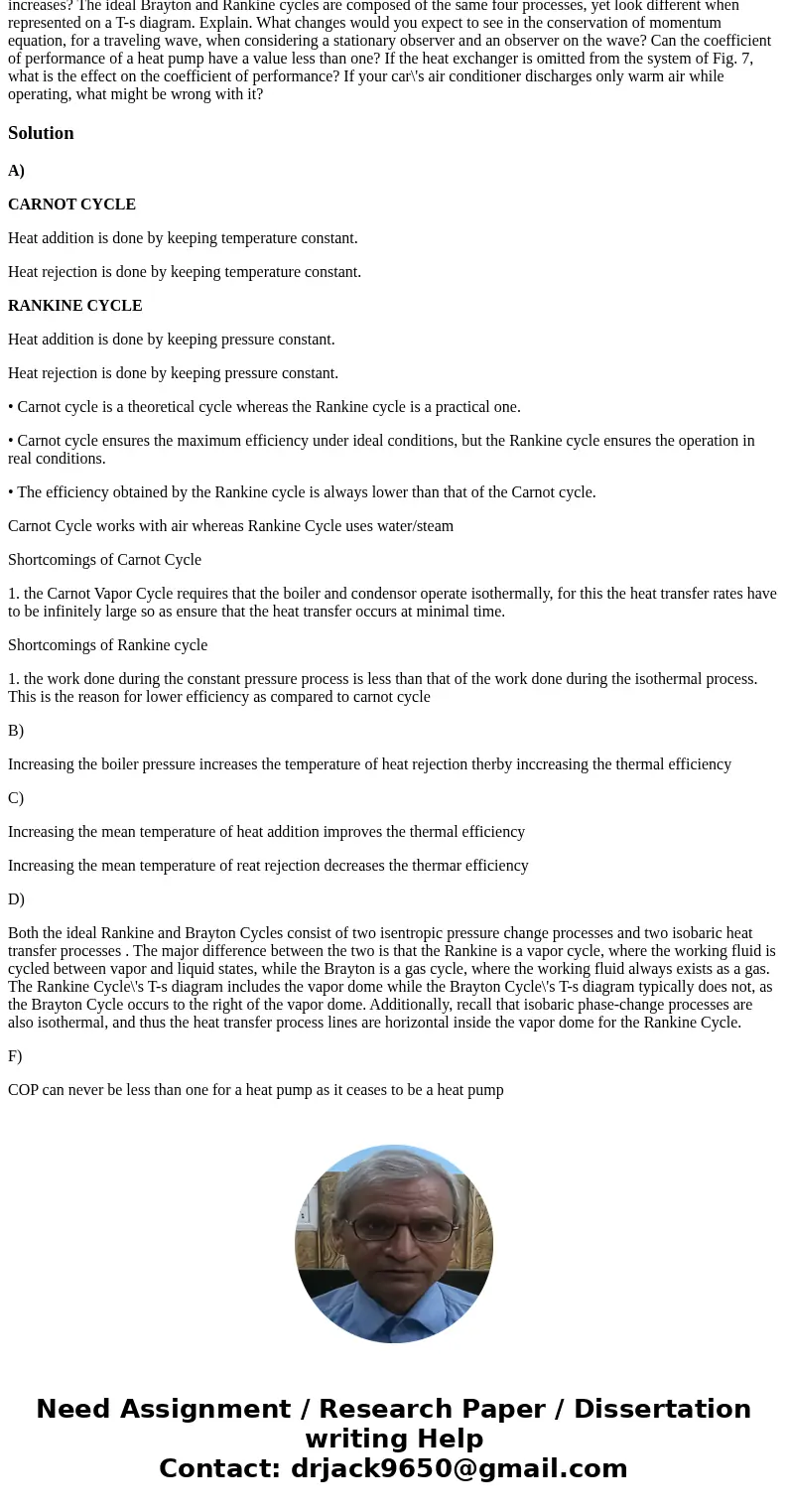Compare the ideal Rankine cycle to the Carnot cycle how does
Solution
A)
CARNOT CYCLE
Heat addition is done by keeping temperature constant.
Heat rejection is done by keeping temperature constant.
RANKINE CYCLE
Heat addition is done by keeping pressure constant.
Heat rejection is done by keeping pressure constant.
• Carnot cycle is a theoretical cycle whereas the Rankine cycle is a practical one.
• Carnot cycle ensures the maximum efficiency under ideal conditions, but the Rankine cycle ensures the operation in real conditions.
• The efficiency obtained by the Rankine cycle is always lower than that of the Carnot cycle.
Carnot Cycle works with air whereas Rankine Cycle uses water/steam
Shortcomings of Carnot Cycle
1. the Carnot Vapor Cycle requires that the boiler and condensor operate isothermally, for this the heat transfer rates have to be infinitely large so as ensure that the heat transfer occurs at minimal time.
Shortcomings of Rankine cycle
1. the work done during the constant pressure process is less than that of the work done during the isothermal process. This is the reason for lower efficiency as compared to carnot cycle
B)
Increasing the boiler pressure increases the temperature of heat rejection therby inccreasing the thermal efficiency
C)
Increasing the mean temperature of heat addition improves the thermal efficiency
Increasing the mean temperature of reat rejection decreases the thermar efficiency
D)
Both the ideal Rankine and Brayton Cycles consist of two isentropic pressure change processes and two isobaric heat transfer processes . The major difference between the two is that the Rankine is a vapor cycle, where the working fluid is cycled between vapor and liquid states, while the Brayton is a gas cycle, where the working fluid always exists as a gas. The Rankine Cycle\'s T-s diagram includes the vapor dome while the Brayton Cycle\'s T-s diagram typically does not, as the Brayton Cycle occurs to the right of the vapor dome. Additionally, recall that isobaric phase-change processes are also isothermal, and thus the heat transfer process lines are horizontal inside the vapor dome for the Rankine Cycle.
F)
COP can never be less than one for a heat pump as it ceases to be a heat pump


 Homework Sourse
Homework Sourse